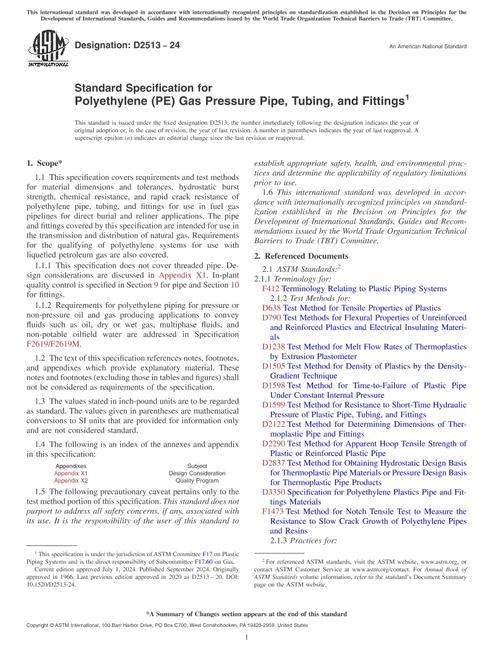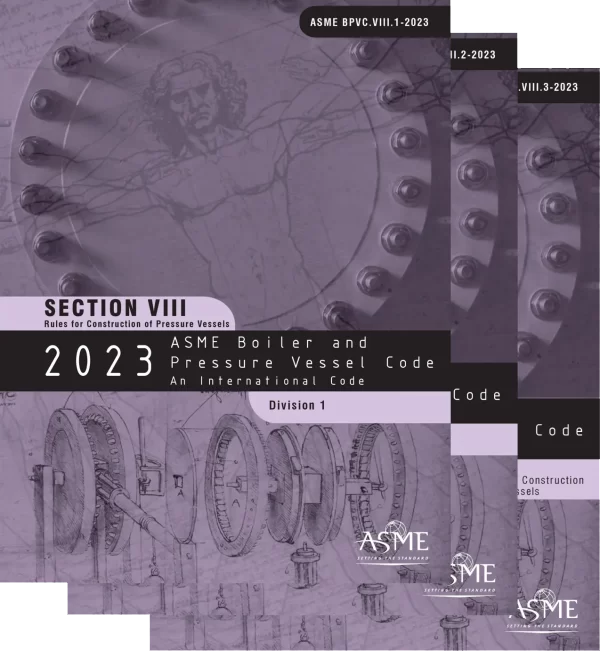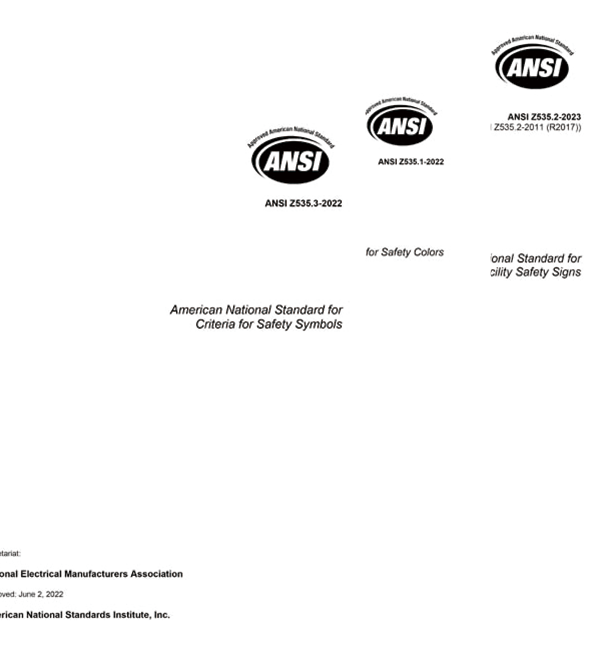ASTM D2837-24
2024
Standard Test Method for Obtaining Hydrostatic Design Basis for Thermoplastic Pipe Materials or Pressure Design Basis for Thermoplastic Pipe Products
- Format:
- Language(s) :
- Published :
- English
- 07/01/2024
Extensive evaluation of stress-rupture data by PPI and others has also indicated that in the case of some materials and under certain test conditions, generally at higher test temperatures, a departure from linearity, or "down-turn", may occur beyond this test method's minimum required data collection period of 10 000 h. A PPI study has shown that in the case of polyethylene piping materials that are projected to exhibit a "down-turn" prior to 100 000 h at 73 °F, the long-term field performance of these materials is prone to more problems than in the case of materials which have a projected "down-turn" that lies beyond the 100 000-h intercept. In response to these observations, a supplemental "validation" requirement for PE materials has been added to this test method in 1988. This requirement is designed to reject the use of this test method for the estimating of the long-term strength of any PE material for which supplemental elevated temperature testing fails to validate this test method's inherent assumption of continuing straight-line stress-rupture behavior through at least 100 000 h at 23 °C (73 °F).
When applying this test method to other materials, appropriate consideration should be given to the possibility that for the particular grade of material under evaluation and for the specific conditions of testing, particularly, when higher test temperatures and aggressive environments are involved, there may occur a substantial "down-turn" at some point beyond the data collection period. The ignoring of this possibility may lead to an overstatement by this test method of a material's actual LTHS/LTHSP. To obtain sufficient assurance that this test method's inherent assumption of continuing linearity through at least 100 000 h is appropriate, the user should consult and consider information outside this test method, including very long-term testing or extensive field experience with similar materials. In cases for which there is insufficient assurance of the continuance of the straight-line behavior that is defined by the experimental data, the use of other test methods for the forecasting of long-term strength should be considered (see Appendix X1).
| ASTM D2837-24 | |
|---|---|
| STANDARD INFO: | |
| Standard Name | ASTM D2837-24 |
| Scope | Standard Test Method for Obtaining Hydrostatic Design Basis for Thermoplastic Pipe Materials or Pressure Design Basis for Thermoplastic Pipe Products |
| Publisher | ASTM - ASTM International |
| Languages | English |
| State | |
| Publication Year | 2024 |
| Most recent Version | MOST RECENT |
| Whether to be replaced | |
| Addendum | |
| FILE INFO: | |
| File Size | 1 file , 540 KB |
| Note | This product is unavailable in Russia, Ukraine, Belarus |
| Number of Pages | 17 |
| Published | 07/01/2024 |
| Redline File Size | 2 files , 840 KB |
| ASTM D2837-24 | ||
|---|---|---|
| History | Publisher Year | |
| ASTM D2837-24 | 2024 | Current |
| ASTM D2837-22 | 2022 | |
| ASTM D2837-21 | 2021 | |
| ASTM D2837-13e1 | 2013 | |
| ASTM D2837-13 | 2013 | |
| ASTM D2837-11 | 2011 | |
| ASTM D2837-08 | 2008 | |
| ASTM D2837-04e1 | 2004 | |
| ASTM D2837-04 | 2004 | |
| ASTM D2837-02 | 2002 | |
| ASTM D2837-01ae1 | 2001 | |
| ASTM D2837-01a | 2001 | |
| ASTM D2837-01 | 2001 | |
| ASTM D2837-98a | 1998 |
Related products
- Format:
- Language(s) :
- Published :
- English
- 07/01/2024
$34
- Format:
- Language(s) :
- Published :
- English
- 04/15/2023
$25
- Format:
- Language(s) :
- Published :
- English
- 10/01/2022
$28

Over 3,000,000 global standards
Our standards library is extensive, with over 2 million documents, ensuring we meet the needs of various industries. Whether it’s ASME, DIN, ASTM or ISO and other internationally recognized standards, we offer complete documents and the latest versions to help customers adhere to industry regulations in their projects. Whether your needs are technical standards, regulatory requirements, or design guidelines, our standards library provides comprehensive support.
24 online customer service
Our team includes up to 50 engineers from fields such as healthcare, electronics, and construction, who can answer your technical questions and ensure you find the correct and accurate standard documents. We are dedicated to helping you find the best solution that meets your needs.

Thanks to the StandardsClub customer service team for helping me find the ASME BPVC-2023 SET I was looking for in a high-quality PDF version. Their assistance was excellent, and the document quality exceeded my expectations!
This standard document is very detailed, covering all relevant technical points, and provides comprehensive guidance for my project. The ANSI/NEMA Z535 SET was exactly what I needed, and I am very satisfied with the quality!
The purchasing process was straightforward, the price was very competitive, and the download was quick. The Tissue Engineering Standards Addressing Product Quality and Characterization Package was of excellent quality and provided all the information I needed. Definitely a great value for the price!
“Got questions? Our professional customer service is ready to assist you anytime. Whether it’s finding documents, getting discounts, or navigating the purchase process, let us help you get the standards you need!”

Sign Up Our Newsletter
Don’t miss out! Subscribe now to get exclusive offers and industry insights!
We care about your data in ou privacy policy.







